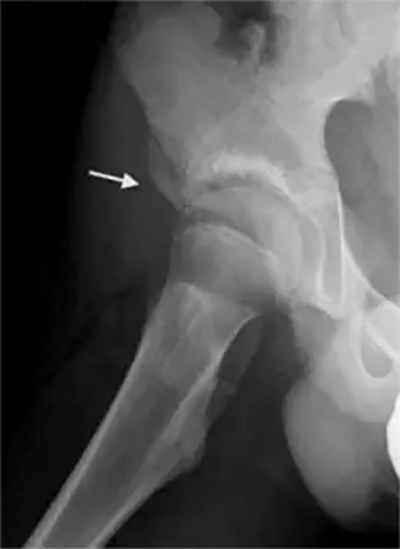Subspine Impingement

What is Subspine Impingement?
Subspine Impingement can be a cause of pain in the hip. Subspine impingement can occur with or contribute to femoroacetabular impingement (FAI) and eventually lead to persistent hip pain, limited function, and osteoarthritis. Subspine impingement is described as when an overgrowth of a bony prominence on the pelvis rubs on the neck of the femur.

Causes of Subspine Impingement
Specifically, activities with deep rotation and flexion of the hip can lead to the development of subspine impingement. Subspine impingement can be associated with:
- Loose bodies or heterotrophic ossifications
- Rectus femoris tendinopathy
- Repeated movement of the hip
- Traumatic injuries
- Hypermobility
- Femoroacetabular impingement

Symptoms of Subspine Impingement
Patients with subspine impingement may or may not experience symptoms. However, if you experience any of the symptoms below, it may indicate that you have subspine impingement:
- Pain around the groin, upper thigh, and side of the hip
- Catching or locking of the hip
- Pain that occurs after exercises with flexion
- Limited range of motion when lifting the leg
If you recognize these symptoms, certified medical professionals from the American Hip Institute can perform further tests to confirm the diagnosis.

Diagnosis of Subspine Impingement
Multiple tools can be used to diagnose subspine impingement, such as assessing medical history, physical examination, and diagnostic tests. Our providers at the American Hip Institute may utilize any of the following tests to diagnose your condition:
- X-Rays: Providers can rule out other possible conditions that may contribute to the pain you're experiencing. Using X-rays, they can check for structural abnormalities and fractures.
- Physical Examination: Specific tests can test range of motion, joint stability, and help identify if the cause of pain is from subspine impingement. These can include moving the hip into flexion, adduction, abduction, and rotation.
- Medical History: Our certified medical practitioners will also inquire about your medical history, including lifestyle, previous surgeries, and current symptoms.
- Diagnostic Injection With Local Anesthetic: In some cases, a diagnostic injection using a local anesthetic may be administered to the hip to determine whether pain stems from damage to structures surrounding the hip or other structures like the lumbar spine.

Treatment Options for Subspine Impingement
Treatments for subspine impingement vary depending on the severity of symptoms and the patient’s individual needs. Conservative treatment is the first option when treating subspine impingement.
Here are some of the conservative treatment options available to you at the American Hip Institute:
- Activity Modification and Rest: Doctors may recommend avoiding certain activities and opting for rest to help reduce symptoms.
- Physical Therapy: Physical therapy can help improve your range of motion and strengthen the muscles supporting your hip joint.
- Medications: Anti-inflammatory medications can help reduce the pain and inflammation associated with torn cartilage.
- Injections: Orthobiologics or corticosteroid injections can provide relief by reducing inflammation and promoting healing.

Surgical Treatment
If conservative treatment methods are ineffective, and if the patient and physician feel necessary, surgical methods can be recommended. Below are possible surgical interventions for subspine impingement:
- Anterior inferior iliac spine (subspine) decompression
- Femoroplasty
- Acetabuoplasty
- Loose body removal
- Selective labral debridement, repair, or reconstruction
Depending on operative findings and procedures performed, rehabilitation from surgery can take several weeks to several months.
